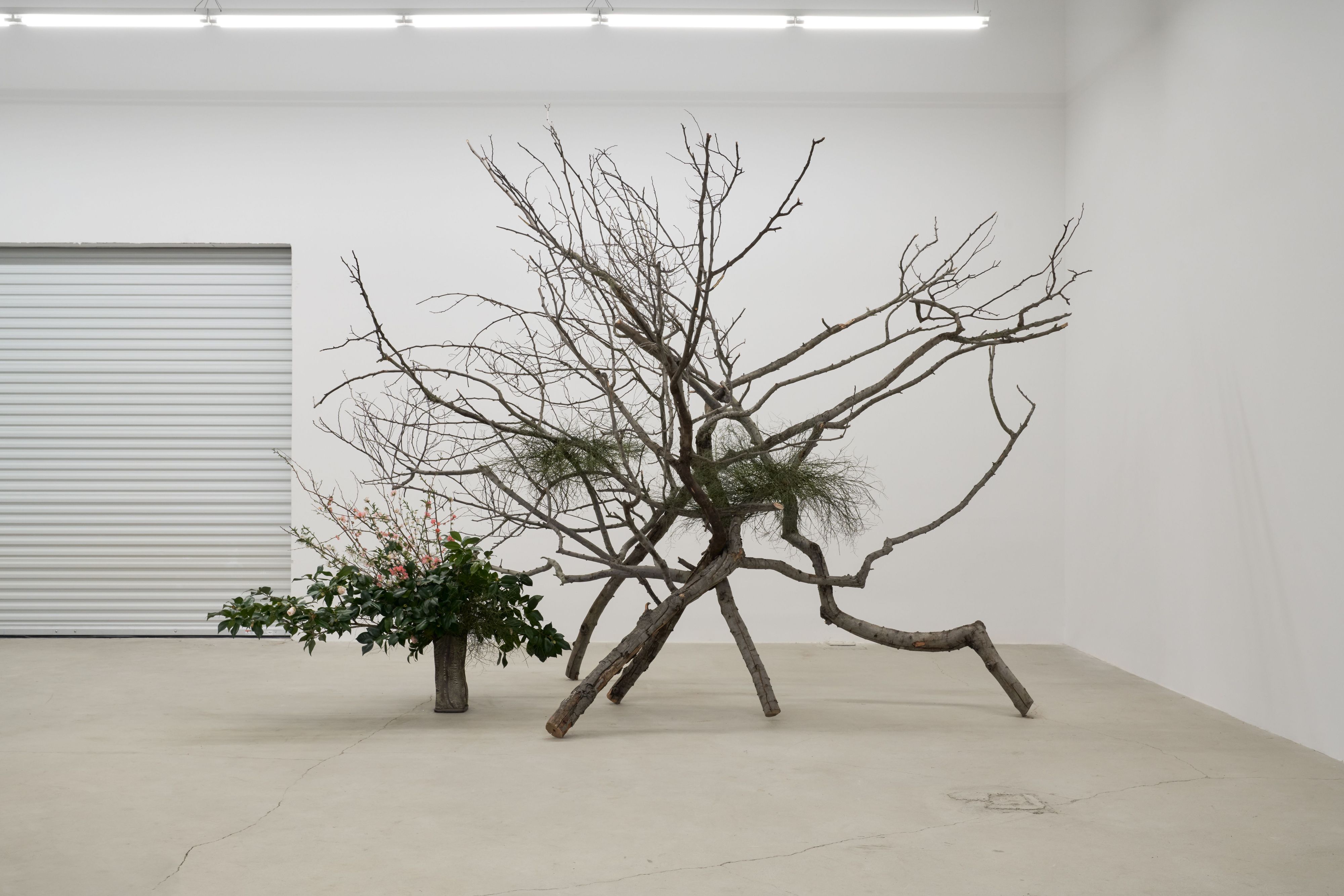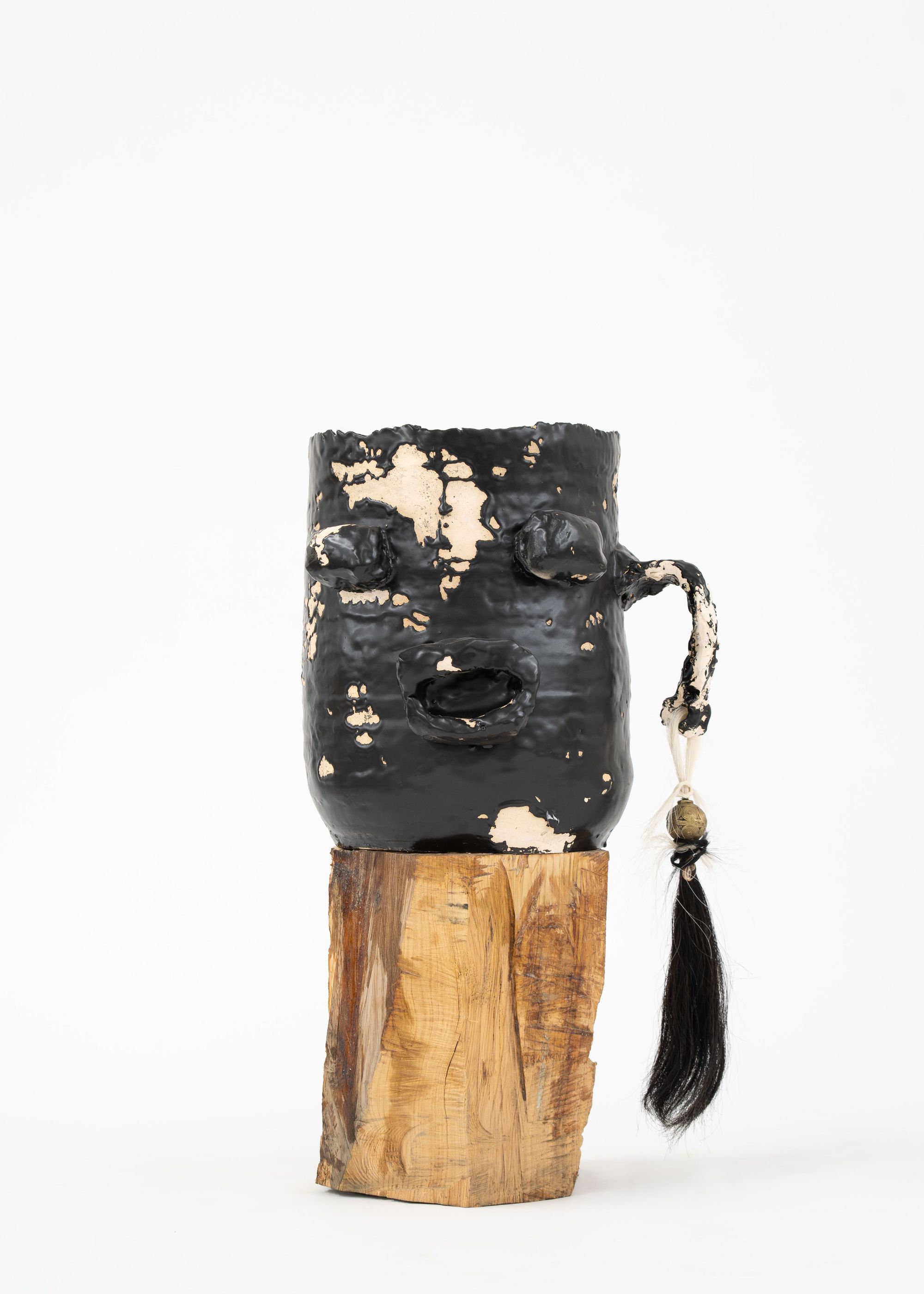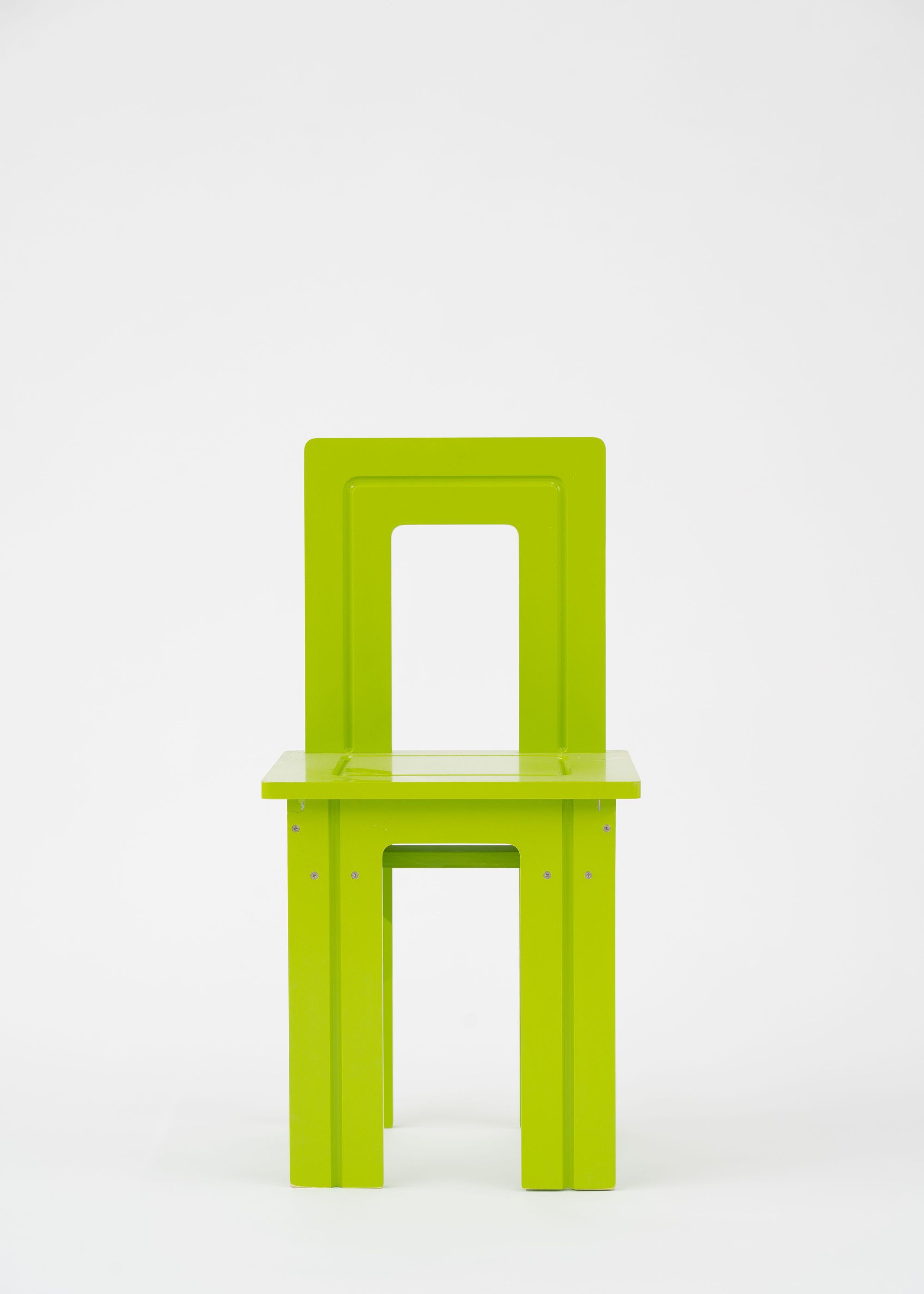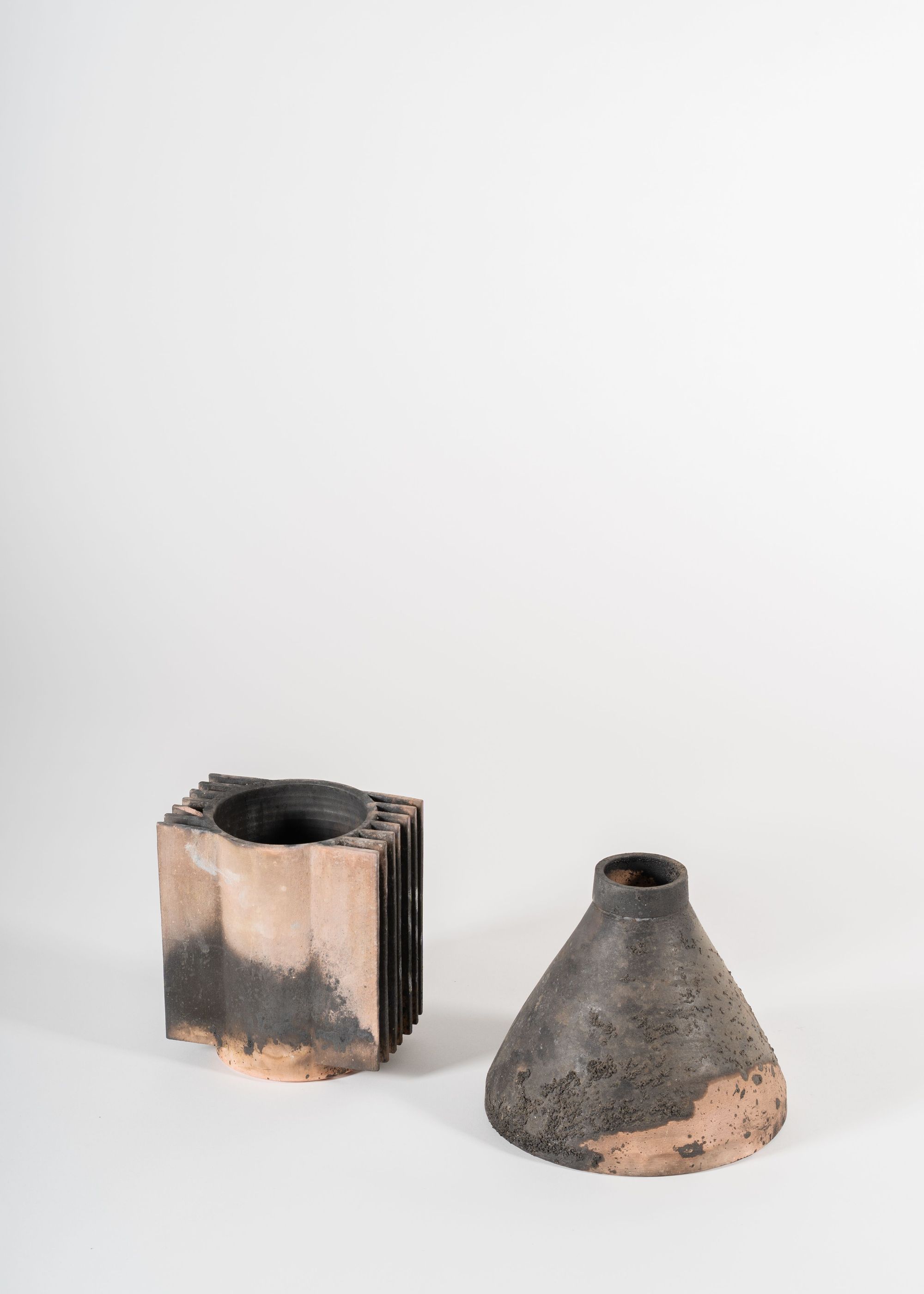
Ashwini Bhat’s Assembling California: Early Spring in Estero Trail. Photo by Metahaiku.

Installation view of VESSELS at SIZED.SPACE. Photo by Elizabeth Carababas.
On the floor of SIZED.STUDIO, the recently opened Hollywood brick-and-mortar housing creative director Alexander May’s consultancy studio, SIZED, May arranged loose barriers of aluminum piping to cordon off rectangular sections of the floor. These “Sites” are a tidy way of organizing his latest curatorial project, VESSELS, a constellation of more than 200 objets by artists, designers, architects and creative studios from around the world.
The idea for VESSELS was inspired by the Sōgetsu school of ikebana, the traditional Japanese art of floral arrangement. As a school of practice, Sōgetsu prioritizes open-mindedness and individualism in its expressions, which originally defied the rigid teachings of ikebana.

Installation view of the Ikebana Site at VESSELS at SIZED.SPACE. Photo by Elizabeth Carababas.
For the show, May commissioned a local practitioner to create a large-scale topiarian installation in this style, rooting one of the five Sites of the exhibit, which in turn mimics the surrounding vessels’ notions of traditionalism while amplifying their experimental and dramatic frequencies. “When viewed in conjunction with the floral installation,” May says, “the personality in each piece responds to the Sōgetsu school’s philosophy on genuine thinking and diverse creativity.”
In both its aesthetic form and in its characteristic spirit of limitlessness, the Ikebana Site suggests the harmonious, yet paradoxical, coexistence of taking up space and making space. The vessel, as a body, tool, and metaphor, does both: it has a presence, and its presence exists to accommodate the presence of something else.

Ashwini Bhat’s Assembling California: Early Spring in Estero Trail. Photo by Metahaiku.

Leena Similu's stonewares featuring molded faces inspired by her West African heritage, Bamileke bead, cowrie shell, and goat hair. Photo by Metahaiku.

Another one of Leena Similu’s stonewares. Photo by Metahaiku.

Ashwini Bhat's Self Portrait as Kali. Photo by Metahaiku.
The exhibition was rife with a wide range of representations of what “vessels” may signify, prompt, or evoke. California-based, South-Asian artist Ashwini Bhat’s Assembling California: Early Spring in Estero Trail is a gnarled, winding clay gesture whose capacity for holding something is more in the openness of its form than its potential hollowness. And in Self Portrait as Kali, a curvaceous, folding twist of clay gives way to a piece of Sari silk. The fabric gently hangs from its mouth, suggesting both primordial femininity and the reclamation of the body-as-vessel, which is also apparent in its cinched bottom that impedes its potential function of containing an external substance.
Meanwhile, PIN–UP’s own Emmanuel Olunkwa’s duet of chairs, Baby and The Slimer (in its debut appearance), are a distinct call-to-action, summoning sitters with their cleanly lacquered, pop-colored forms. Christopher Al-Jumah’s undulating A Vessel that Asks Forgiveness again subverts clinical notions of “holding”, implying alternate opportunities to house something external within the vacant spaces intrinsic to the waviness of its gum-rubber form. And Leena Similu’s series of small stoneware works manipulate the vessel form through interventions in their façades, resulting in molded faces inspired by her West African heritage, adorned with ornaments of Bamileke bead, cowrie shell, and goat hair.

Ashwini Bhat’s Assembling California: Early Spring in Estero Trail. Photo by Metahaiku.

Emmanuel Olunkwa's The Slimer. Photo by Metahaiku.

Emmanuel Olunkwa's Baby. Photo by Metahaiku.
In addition to the varying opportunities for forms to either embrace or divest from “containment,” the lack of hierarchy in the overall presentation is perhaps, by its omission, VESSELS’ most significant throughline. Legacy collides with the contemporary throughout: a Pablo Picasso owl vase sits on the floor next to a two-part body mold by Vanessa Beecroft, while small stoneware works by LA-based artist Ben Medansky rise up on plinths beside them; and shimmering, talismanic silver chairs by Tokyo-born Californian Shun Kinoshita rest a stride away from a vintage Charlotte Perriand dining table, immediately nearby to wooden furniture prototypes by Rick Owens.
This neutralized spatial playing field gives all objects equal weight. Taken together with the deliberate space-making of the Sites and their overt topographies of mixed-media, VESSELS far from proscribes a set experience. It more so suggests an invitation into the conversations led by the works themselves — the discussion between clay and timber and ikebana and resin and glass, between bowl and sconce and table and pot and chair. The eponymous vessel is the metaphor: by its very presence, it makes ample space for these varied coexistences.

Shun Kinoshita's silver chairs. Photo by Metahaiku.

Ben Medansky's stonewares. Photo by Metahaiku.